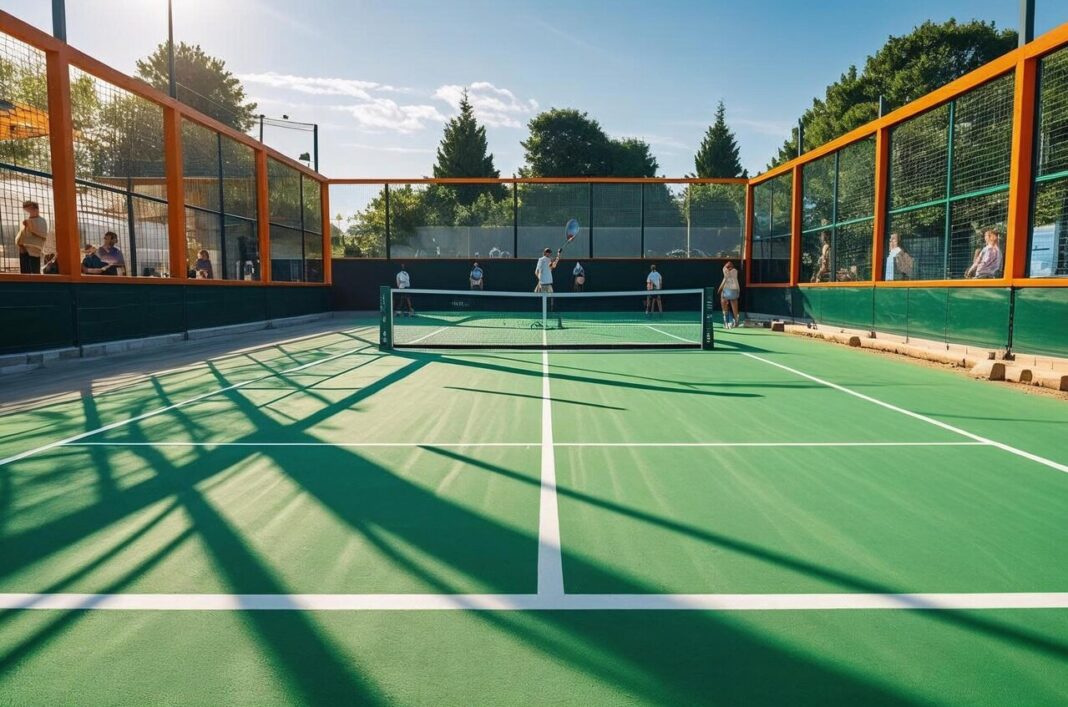The UK’s booming appetite for padel – a hybrid racquet sport that blends tennis and squash – is fuelling a wave of development interest, with new analysis showing a 113% rise in padel court planning applications in 2024 and nearly 17,000 potential sites across the country identified for future growth.
According to new data from land and planning platform Searchland, applications to build padel courts surged from 163 in 2023 to 348 last year, marking the third consecutive year of triple-digit growth.
The momentum has continued into 2025, with 295 applications already submitted by mid-year – a figure expected to rise to 544 by December.
The sport’s rapid rise has caught the attention of developers, investors, and local authorities alike.
COMMERCIAL OPPORTUNITY
The Lawn Tennis Association (LTA) estimates more than 400,000 people in Britain were playing padel by the end of 2024 – up from just 89,000 in 2021.
And with relatively modest capital outlay, an expanding player base, and a land market hungry for flexible-use solutions, padel is fast becoming one of the UK’s most promising growth stories in the leisure and development sector.

Searchland co-founder Hugh Gibbs believes this acceleration represents a major commercial opportunity.
“Padel’s extraordinary rise in popularity isn’t just a cultural trend, it’s a powerful signal to landowners, developers, and local authorities,” he says. “The combination of surging participation, relatively low setup costs, and strong ROI potential makes padel an ideal addition to both temporary and permanent development plans.
“The fact that there are nearly 17,000 sites already primed for padel across the UK shows just how much untapped opportunity is out there. For investors and landowners looking to maximise land use or diversify leisure offerings, this is the time to act.”
COMPACT AND FLEXIBLE
The sport’s compact and flexible design is proving to be a major asset. Two padel courts can typically fit into the space of one traditional tennis court, with lower upfront costs and simpler infrastructure, making it attractive for both public and private sector investment.
Planning data from Searchland shows a dramatic upward trajectory. Just 53 planning applications for padel courts were submitted in 2021. That number rose to 82 in 2022, 163 in 2023, and 348 in 2024. If current trends continue, this year’s total will represent an increase of 926% over four years.
INVESTMENT OPPORTUNITIES
But the most compelling figures lie in the land opportunity data. Using proprietary insights, Searchland has identified 16,851 “existing destination padel opportunities” – sites such as golf courses, racquet clubs and football centres with unused green or hardstanding space, located in urban or suburban zones likely to yield high footfall and user demand.
London leads with 1,086 of these prime locations, followed by Bristol (206), Edinburgh (189), Leeds (129), and Manchester (128). Already, 47 of the capital’s eligible destinations have submitted planning applications.
GROWING INTEREST
In addition to traditional sporting venues, Searchland has mapped 15,742 “conversion opportunities” – existing commercial properties, including disused retail and industrial sites, that could be repurposed for padel use. London again tops the list with 929 such properties, followed by Manchester (468), Leeds (360), Birmingham (346), and Bradford (320).
There is also growing interest in integrating padel into temporary schemes, particularly across large residential developments with long build-out timelines. In these cases, padel courts can be installed on portions of land not immediately needed, generating revenue or community use during dormant phases.
UNTAPPED MARKET
Searchland has pinpointed 674 “short-term padel investment opportunities”, including 151 in London, where leisure use could complement housing delivery.
Gibbs believes padel will increasingly become a standard fixture in new and evolving community infrastructure:
“The fact that there are nearly 17,000 sites already primed for padel across the UK shows just how much untapped opportunity is out there,” he says.
“For investors and landowners looking to maximise land use or diversify leisure offerings, this is the time to act.”











